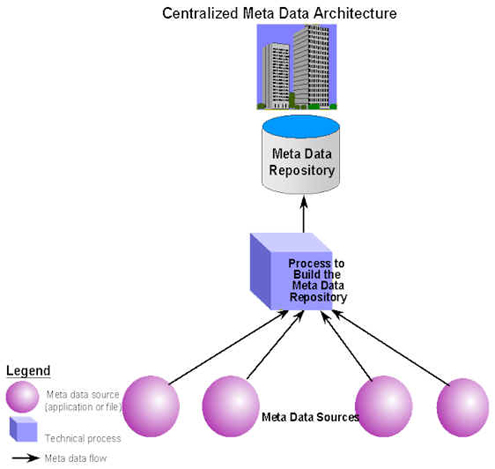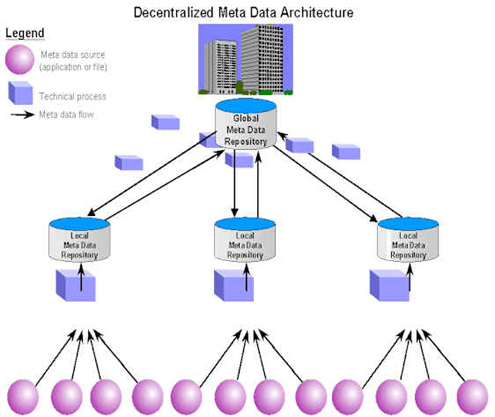Published in TDAN.com October 2001
Over the next few years many companies will have the unenviable task of completely rebuilding their decision support systems. This is occurring because many of these systems were built with flawed
architectures. The architecture used to build the meta data repository is every bit as critical to its long-term viability as the architecture for the decision support system is. By taking the time
to build a sound architecture your repository effort will be able to grow and mature over time to support all of your company’s meta data needs.
A meta data repository is the logical place for uniformly retaining and managing corporate knowledge within or across different organizations within a company. Over the past several years, a number
of meta data repository architectures have emerged to address the challenges for administering and sharing meta data within an enterprise. The two most common approaches to building a meta data
repository architecture are:
- Centralized
- Decentralized
For most small to medium sized organizations, a single meta data repository (the centralized approach) is sufficient for handling all of the meta data required by the various groups in the
corporation. This architecture, in turn, offers a single and centralized approach to administering and sharing meta data. On the other hand most large enterprises that have multiple and disparate
divisions, will require several meta data repositories (decentralized approach) for handling all of the corporation’s various types of meta data content and applications.
Centralized Meta Data Repository Architecture
This approach is the most common one that corporations have implemented. The key concept of a centralized meta data architecture (see Figure 1) is a uniform and consistent meta model that mandates
the schema for defining and organizing the various meta data be stored in a global meta data repository. The strength of this approach is that it integrates all of the meta data and stores it in
one meta model schema that can be easily accessed.

Decentralized Meta Data Repository Architecture
A decentralized meta data architecture creates a uniform and consistent meta model that mandates the schema for defining and organizing the various meta data to be stored in a global meta data
repository and in the shared meta data elements that appear in the local meta data repositories (see Figure 2). All meta data that is shared and re-used among the various repositories must first go
through the central global repository, but sharing and access to the local meta data is independent of the central repository.
While this architecture provides the means for centrally managing the administration and sharing of meta data across multiple meta data repositories, it also allows each local repository to be
autonomous for its own content and administration requirements. This architecture is similar to a federated management in that its central governing architecture provides the guidelines that are
common to all of its members, and each of its members can also create localized guidelines for their specific needs.

Both of these approaches have their advantages and disadvantages (see Table 1 for a summary) to them. Choose wisely and your repository will support your company’s requirements for many years
to come.

